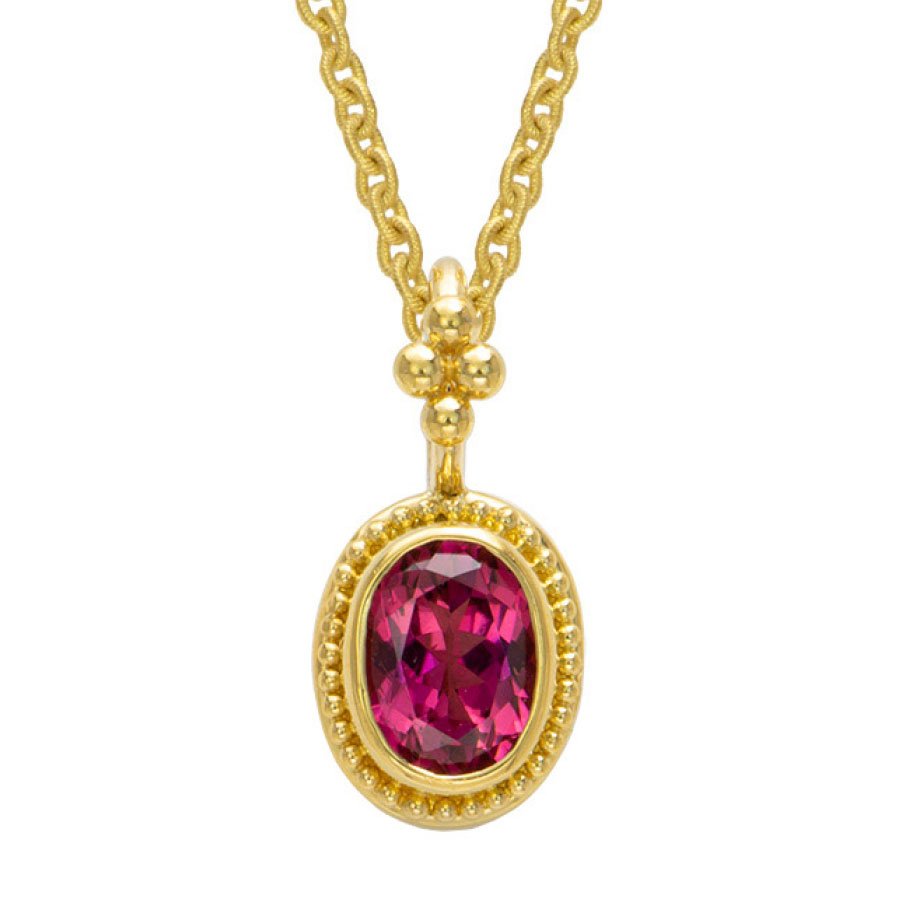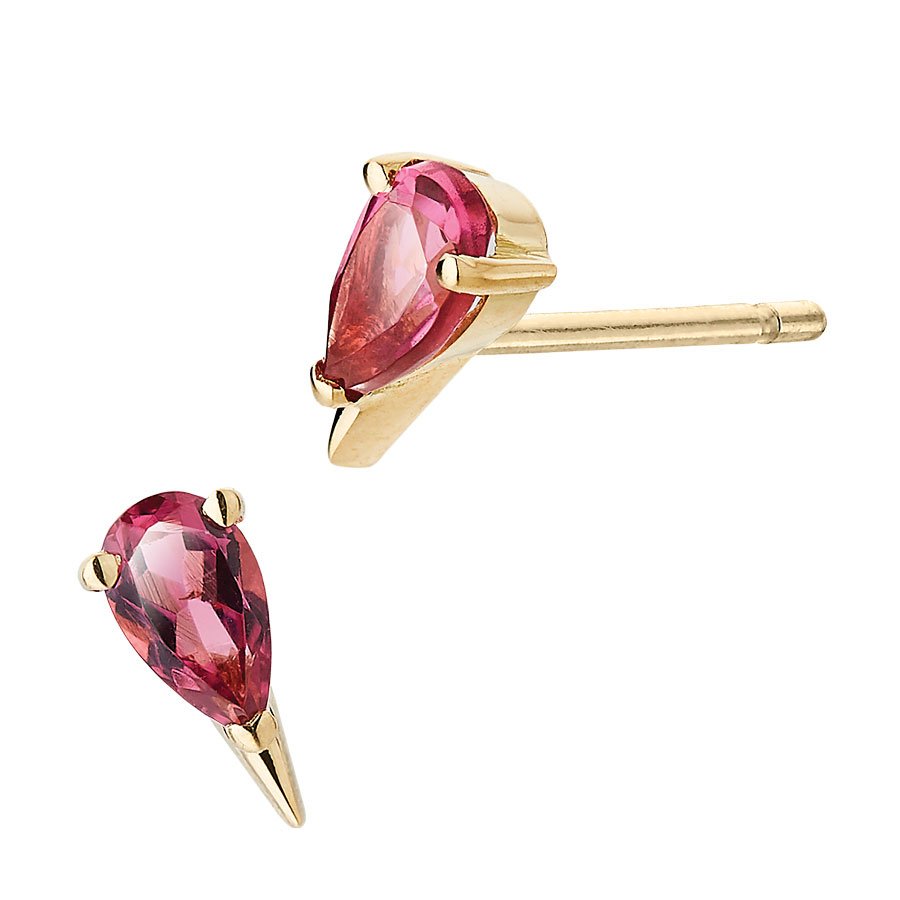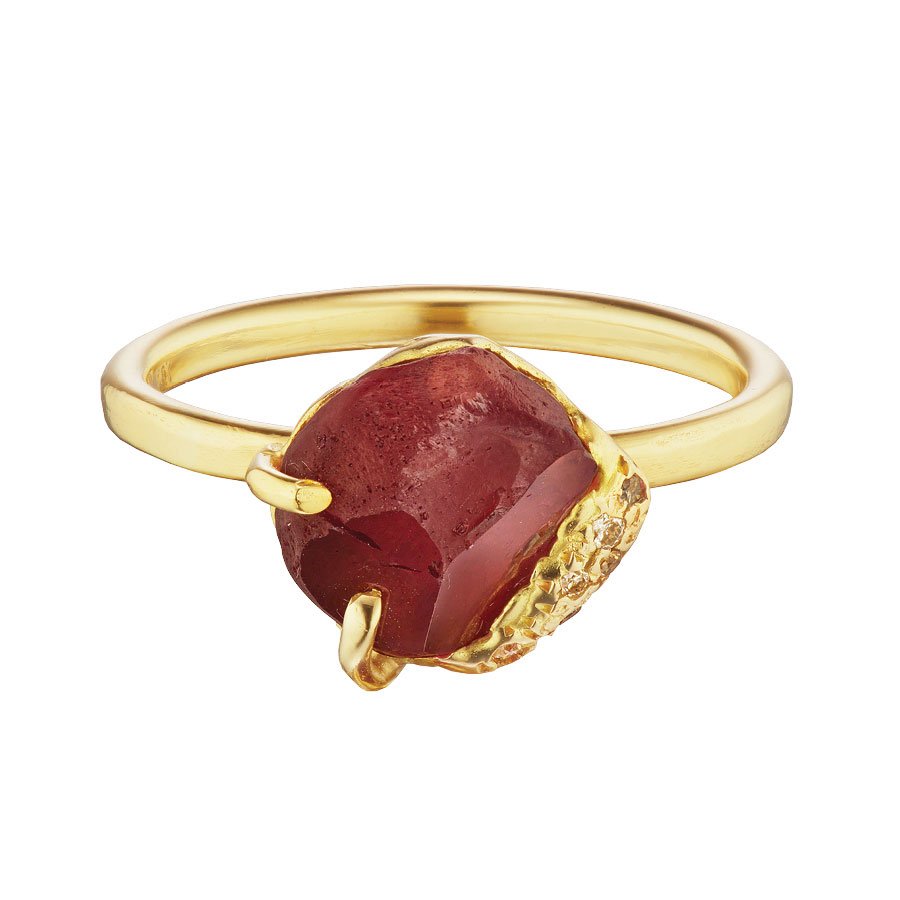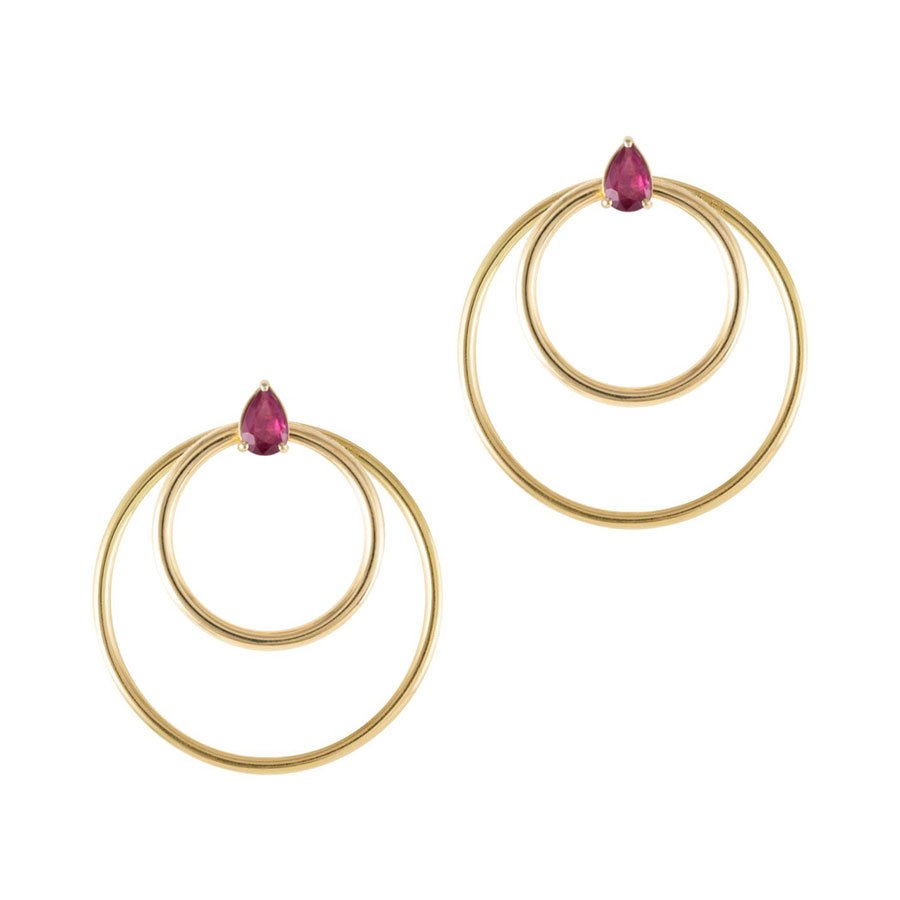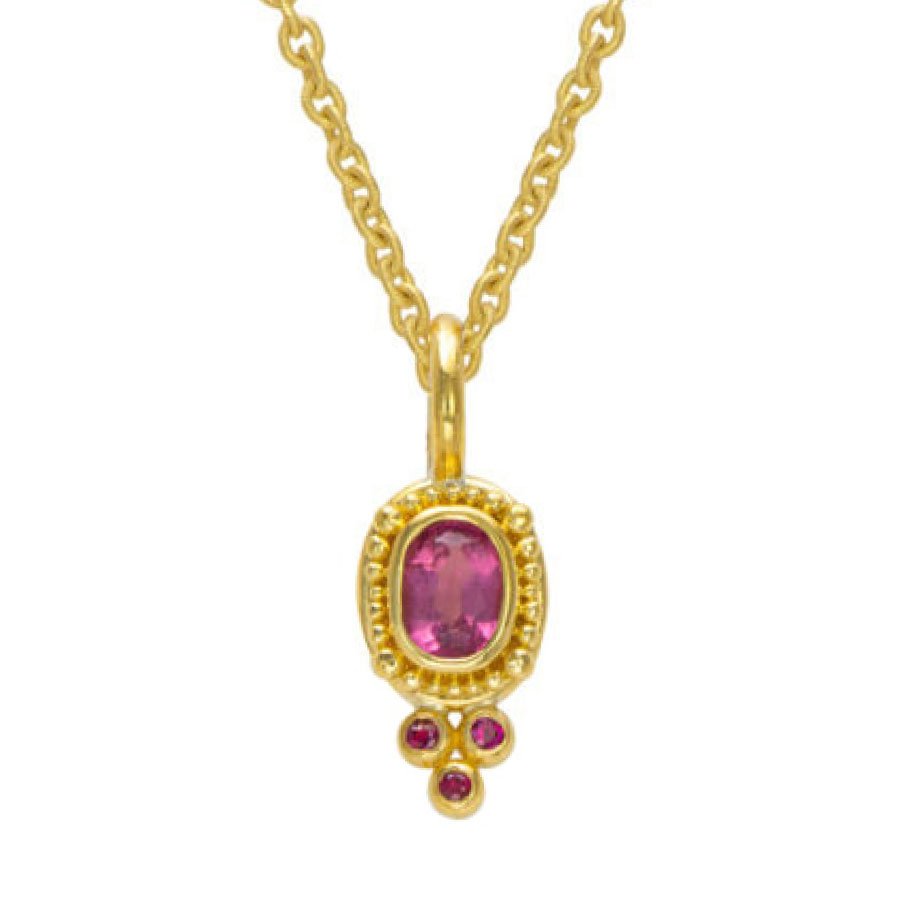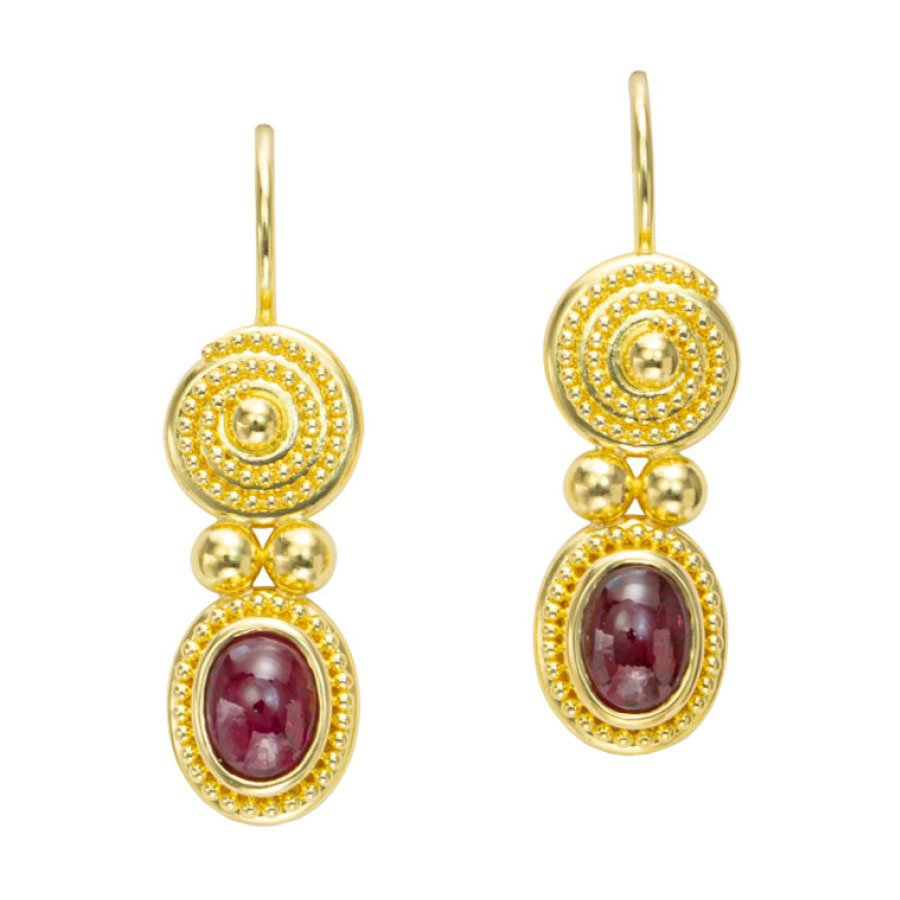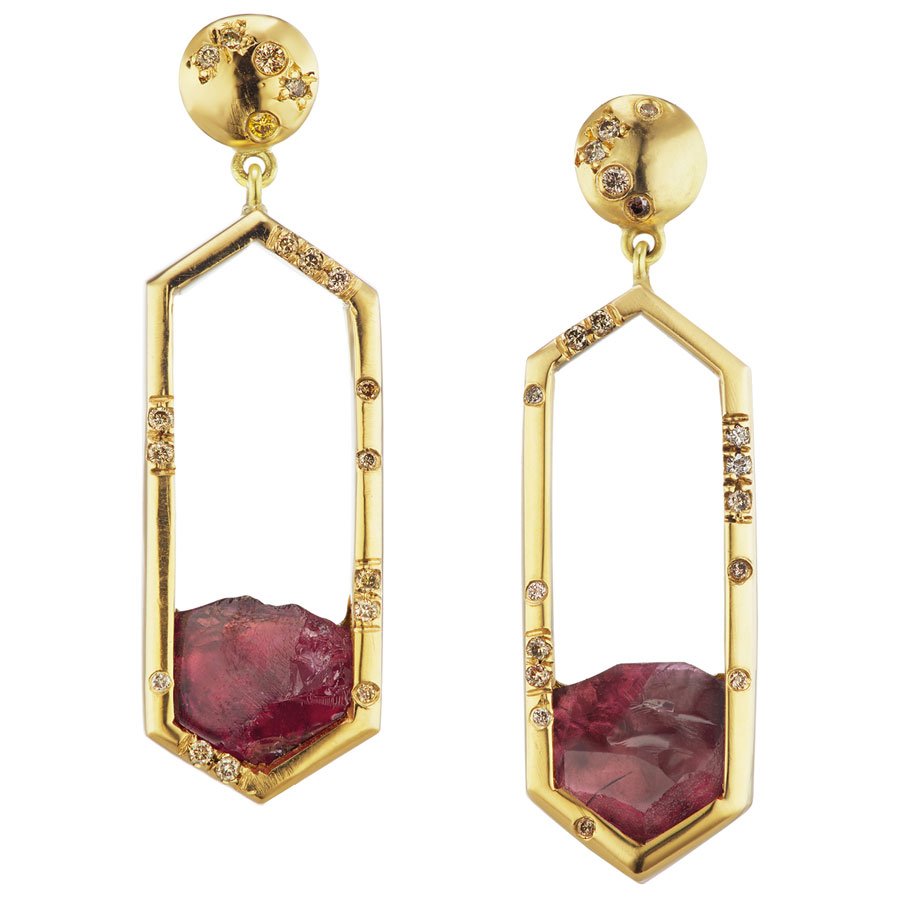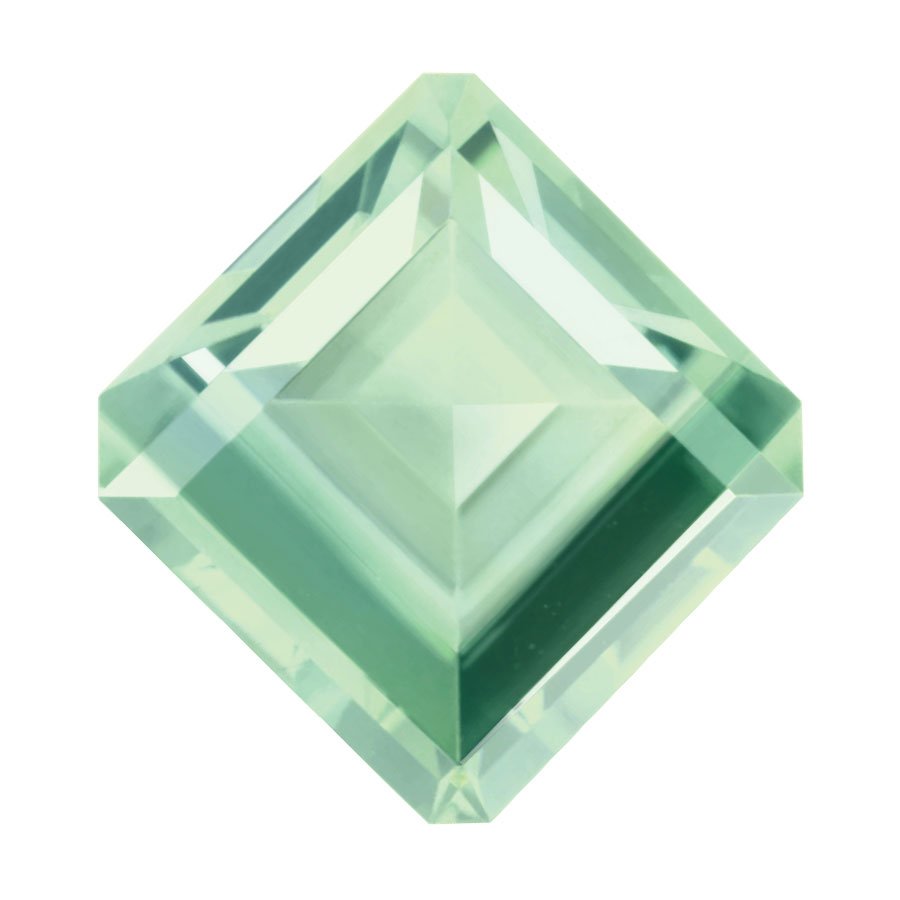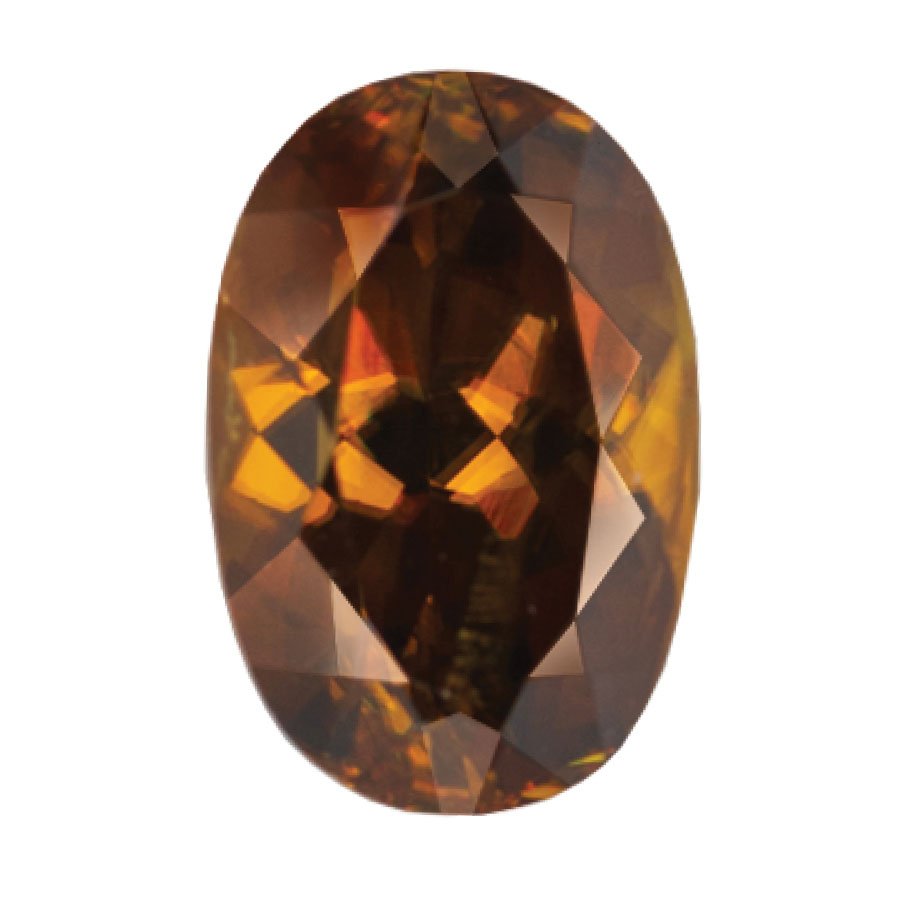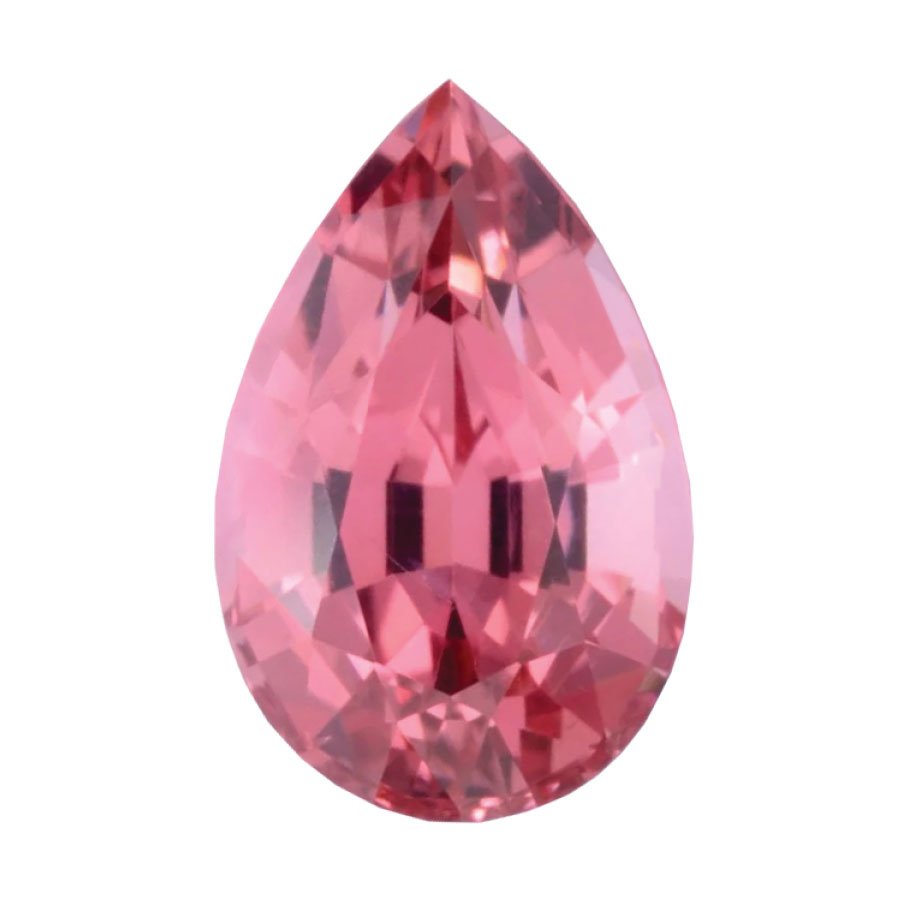Ruby-hued Gemstones: A Sparkling Tasting
MEET RESPONSIBLY SOURCED GEMS: RUBY, SPINEL, AND GARNET
This Sparkling Tasting of ruby and ruby-hued gemstones was presented to a group of extraordinary women who fight for women!
Beyond the topic of gemstone education, we discussed what responsible sourcing means. Below are a few facets of our intimate conversation!
RUBY AND HER GORGEOUS DOPPELGANGERS
Ruby is among the most valuable gemstones per carat, apart from colored diamonds. Many people may not realize it, but ruby and sapphire are the same mineral species, corundum. Sapphire can be any color except red, which would make it a ruby!
It is the presence of chromium when the gemstone was being formed that gives it that red hue. There are cases that a gem exhibits color that is on the cusp of being graded as a pink sapphire or a ruby.
While grading can subjective, it greatly impacts market value, as a ruby will command a higher price than a pink sapphire.
Spinel was unfairly deemed the “great imposter” for being mistaken as ruby for centuries. It is not that anymore! Historically it has been found alongside deposits of ruby and sapphire, which accounts for the confusion. It was not until 1783 that spinel was differentiated as a separate mineral species.
Spinel exhibits not only ruby red hues, but it can also be shades of pink, orange, green, blue, violet, and purple.
Beyond beauty, it is a durable colored gemstone. It is an 8 on the Mohs Scale, meaning it is a beautiful option as an everyday or engagement ring.
Garnet has way more charisma than many people realize. Why are they special? Garnet can be any color of the rainbow (similar to sapphire), but what makes it extraordinary (in my opinion) is that it can exhibit the widest variety of color change hues among all gemstones.
The most common variety we all know well is the raspberry-red, purplish-red rhodolite garnet. Rare garnets are mandarin spessartine, emerald-green tsavorite, and the most coveted is demantoid.
One additional thought…
Tourmaline can also dazzle with a vast array of juicy hues - from the electric blue of Paraiba to emerald green chrome to ruby red rubellite.
All tourmalines are pleochroic, meaning the color changes when viewed from different angles.
As I mentioned above, the presence of chromium is what gives ruby its red hue, the colors of any gemstone are determined by trace elements of other minerals when it was formed. A great parallel to this is a wine’s flavor being expressive of “terroir” - the elements of the earth!
Let’s take a look at three breathtaking traceable gemstones: a ruby, a spinel, and a garnet!
WHICH GEMSTONE IS THE MOST VALUABLE?
RUBY
Mozambique
1.15 carats
not heat-treated
VERMILLION RED SPINEL
Tanzania
1.58 carats
RHODOLITE GARNET
Malawi
4.16 carats
RUBY IS THE MOST VALUABLE!
This RUBY is approximately 24 times more valuable than this garnet.
This SPINEL is approximately 17 times more valuable than this garnet.
Rarity plays a significant role in determining the value of any gemstone!
Even though this ruby is the smallest gemstone by carat weight, it commands a higher price point per carat because of its rarity. And the rarest of the rare are untreated rubies - those that have not been heated to minimize inclusions and enhance their beauty.
The most prized are from Burma - especially those that exhibit the desired “pigeon blood” red. Importantly, Burmese rubies are considered conflict gemstones. Most of these that circulate in the market today are from “post-consumer recycled” estate pieces.
Mozambique rubies were discovered less than a decade ago. While they generally exhibit purer crystals and fewer inclusions than Burmese rubies, they are more attainable.
Spinels are becoming increasingly desirable, especially red and cobalt blue hues. Limited fine quality supply cannot meet demand. While they may not be as valuable as ruby, that gap is shrinking.
Another interesting consideration about spinel is that it can even exhibit more fire (rapidly changing flashes of color), due to a high refractive index!
The most important distinction: Beyond what the market dictates, whatever color, cut or size of stone that is uniquely beautiful to you is what matters most!
In the world of SPINEL vs RUBY vs GARNET, which is your favorite?
RUBY + RUBY-HUED GEMSTONES:
CURATED FINE JEWELRY
THE MOHS SCALE: RUBY, SPINEL, AND GARNET
Gemstones that are harder than quartz, a 7 on the Mohs Scale, are great options as everyday and engagement rings.
Diamond is the hardest at 10, meaning it is ideal as an engagement ring.
Ruby is also a gorgeous option at 9, as is spinel at 8.
Garnet at 6.5 - 7.5 is on the cusp as an everyday ring, so a setting that is designed to protect it from accidental bumps with hard surfaces is ideal.
All of these would be amazing as cocktail rings!
Create an EMPOWERING LAYERING NECKLACE
What to know about ETHICAL GEMSTONES and GOLD to ensure your jewelry is NOT FUNDING CONFLICT
WHAT DOES RESPONSIBLY SOURCED MEAN?
A sample report outlining details of a single Nomad’s gemstone, as well as the history of origin and traceability story.
This is an example of a proprietary provenance report that demonstrates Nomad’s commitment to transparency, trust, and traceability. Beyond the descriptive details about each gemstone, the report discloses the history of the origin and a specific gemstone’s journey to their cutting wheel. Nomad’s developed 4 levels of traceability - from Level 1, acquired through direct “mining partnership”, to Level 4 acquired through a dealer in an “open market” with the origin being determined by a gemstone laboratory.
In the same way that we know where our food is from and who made our clothes, why not jewelry?
Responsible sourcing goes beyond ethically or sustainably sourced. This encompasses conflict-free, traceability, protecting people, their skills, and the environment be it land or sea. This is an open, evolving conversation worth having, as we all seek to make choices that align with our values.
As much as possible, the designers in this community do their best to choose jewelry “ingredients” that honor this.
Gemstones can be responsibly sourced or post-consumer recycled (recovered from previously worn jewelry to be reset in a new design).
For precious metals, this can mean using recycled gold - or a step further is mercury-free Fairmined gold.
WHAT IS FAIRMINED GOLD?
As we make ethical choices with Fairtrade wine, food, and fashion, why not the gold in our jewelry? Let’s compare recycled gold versus Fairmined gold…
3 RIVETING QUESTIONS ASKED BY THE GROUP
WHAT GEMSTONE IS A GOOD INVESTMENT?
The one that is uniquely beautiful to you!
Similar to collecting art or cars, invest in what you love while understanding what aligns with your reasonable expectations of a “return on investment”.
Watching high-profile jewelry sales at auction houses will offer an understanding of the market for particular gemstones at the collector level.
Rarity is one of the greatest factors that affect value. Being aware of gemstones that are no longer being mined (or soon to be no longer mined) could be one strategy such as Argyle colored diamonds or Tanzanite.
Spinel can be a beautiful investment because availability can be limited and unreliable. Demand definitely exceeds availability, especially for red and cobalt blue.
Rare garnets can also be alluring investments, such as mandarin (orange) and tsavorite (green). The rarest and most prized is the demantoid garnet for its exceptional fire and brilliance that rivals diamonds.
ARE GEMSTONES STILL BEING FORMED TODAY?
This is such a good question and a complex one to answer.
What I can say is the earth is ever-changing and different gemstone species require different environmental conditions to form.
A current geological study suggests the oldest gemstone material known is Greenland Ruby, forming 3 billion years ago.
GIA Graduate Gemologist® Adrianne Sanogo shared an enlightening article on the ages of diamonds.
The conclusion appears to be that gemstones are eternally being formed, although what is being formed today will not materialize for millions or billions of years.
WHAT IS THE BEST JEWELRY CLEANING SOLUTION?
You already have it at home!
The best cleaning solution is mild dish soap (not detergent) and water with a soft toothbrush or a soft cloth.
Personally, I do not recommend ultrasonic cleaners. They can crack opals, shatter pearls, or damage gemstones that are treated. While it may be safe to clean hard gemstones, such as diamond engagement rings, it can result in loosening prongs over time.
Keep in mind, different gemstones require different wear and care considerations. Among these are soft or brittle gemstones such as emerald, pearl, opal, turquoise, and Tanzanite.
Get the full scoop HERE!
THE BRILLIANT CONCIERGE: YOUR PERSONAL GUIDE TO ETHICAL RUBY JEWELRY
Elevate your collection with jewelry that tells your story, elevates your style, and connects you with your inner power. I protect your time and provide peace of mind when investing in responsibly sourced ruby-hued gemstones or ready-made jewelry, thoughtfully designed by women including:
rings
earrings
necklaces
bracelets
Let’s talk about what inspires you!







